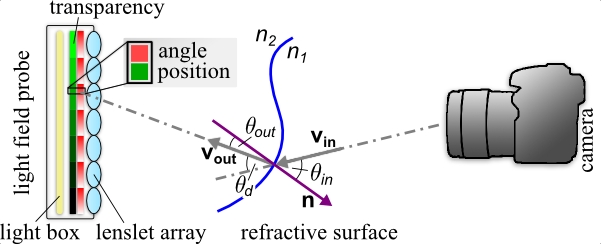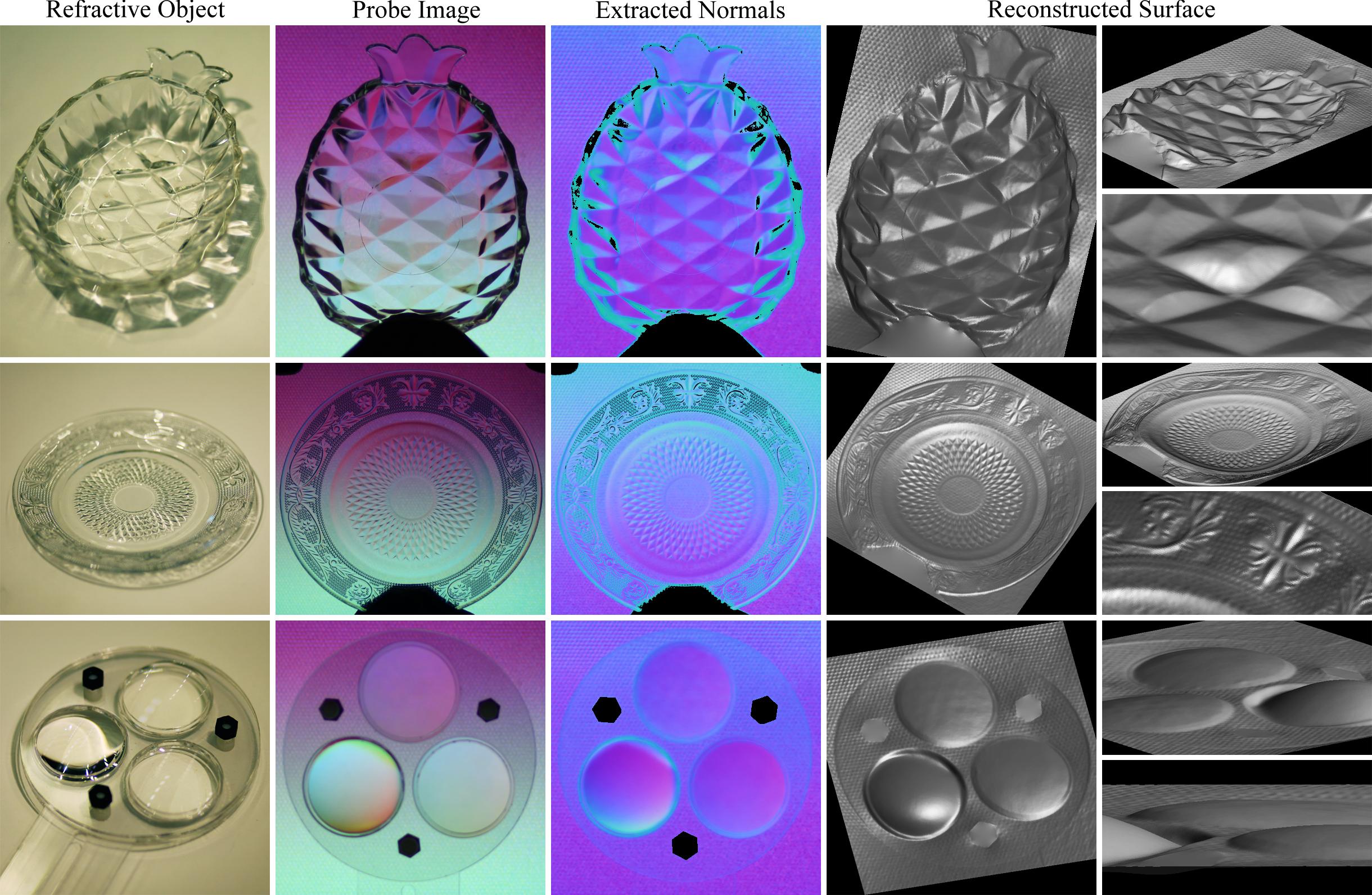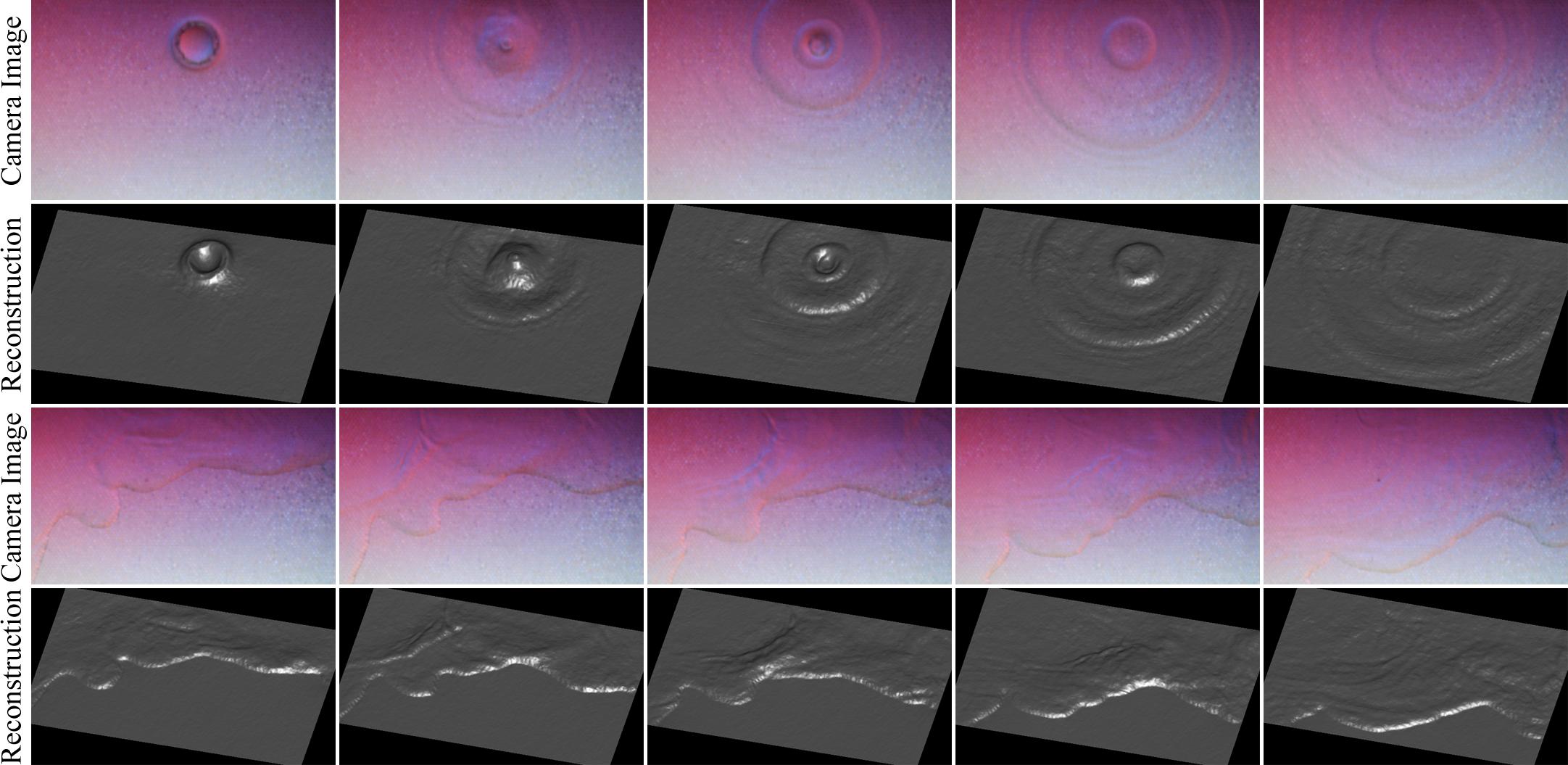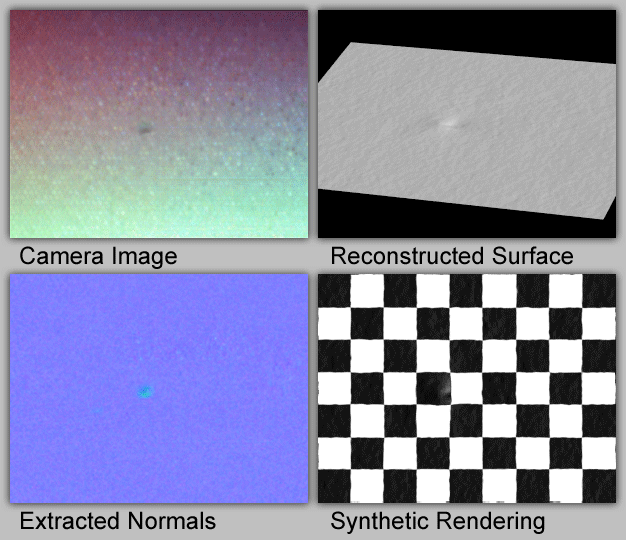Reconstructing dynamic refractive shapes from a high-speed video. A light field probe located behind a transparent, refractive object codes the position and incident angle of refracted light rays on the background in observable changes in color and intensity (upper left). This information is used to reconstruct the surface gradients of thin refractive shapes, such as fluid surfaces, from a single photograph (lower left). The surface gradients or normals can be integrated to estimate refractive shapes (upper right), which can subsequently be used for computer graphics applications (lower right).
Abstract
Acquiring transparent, refractive objects is challenging as these kinds of objects can only be observed by analyzing the distortion of reference background patterns. We present a new, single image approach to reconstructing thin transparent surfaces, such as thin solids or surfaces of fluids. Our method is based on observing the distortion of light field background illumination. Light field probes have the potential to encode up to four dimensions in varying colors and intensities: spatial and angular variation on the probe surface; commonly employed reference patterns are only two-dimensional by coding either position or angle on the probe. We show that the additional information can be used to reconstruct refractive surface normals and a sparse set of control points from a single photograph.
|
|






